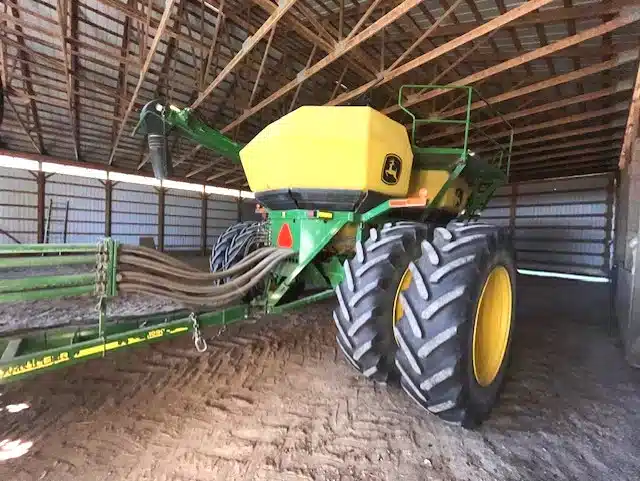Given all that’s known so far about the guy, I’m not optimistic. Whether you or I like him or not, though, by this time next month, he’ll again be president of the United States.
To anyone suggesting Canadians should just clam up about this development south of the border and mind our own business, I’d reply that Donald Trump will, in many ways, be minding our business — so let’s review what we know so far.
[Editor’s note: This column went to press before Nov. 25, when president-elect Trump announced a threat of a 25 per cent tariff on goods imported from Canada into the U.S., and also announced his plan to nominate Brooke Rollins as U.S. agriculture secretary.]
Read Also

Gentle treatments for pain in the neck
Heading toward year-end, people unknowingly tense up against the cold and busyness, causing neck pain that can often be treated with appropriate support and gentle mobility, athletic therapist Kathlyn Hossack says.
Given his voting public’s dissatisfaction with inflation, Trump’s obsession with tariffs is ironic at best — especially tariffs that fly in the face of CUSMA, the North American trade agreement he signed. On the stump in September, he warned U.S.-based ag equipment maker John Deere that if it continued to move manufacturing operations to Mexico, “we are putting a 200 per cent tariff on everything that you want to sell into the United States.”
Sure, for those of us who like to buy local where possible, it’s understandable to want to lash out at companies that move their business to lower-cost jurisdictions. For those of us concerned about escalating costs in new farm equipment, though, new tariffs mean either you, the paying customer, has to eat the cost of the tariff, or the company repatriates its manufacturing to the U.S. and you eat its increased costs of production.
To be fair, though, it’s also been argued that, in terms of leverage, Trump’s threats of tariffs have been more effective than any actual tariffs.
As for CUSMA itself, the deal’s language commits Canada, the U.S. and Mexico to a review every six years, which means that in 2026 the three parties must “review any recommendations for action” that any of them choose to submit. The president-elect has already said he wants to renegotiate the pact.
How exposed is our ag trade in such a review? Of course, Canada’s protected supply-managed sectors remain a sore spot for U.S. officials. A federal private member’s bill, meant to block Canadian negotiators from conceding any additional tariff rate quotas on dairy, poultry and egg sectors in any future international trade talks, passed the House of Commons last year but has long since stalled in the Senate. Canada’s export-facing ag groups would prefer that Bill C-282 just go away already, but even if it passes before 2026, we can expect pressure from the U.S. to repeal it.
The outlook for U.S. domestic ag policy next year could be brighter for that country’s farmers in some respects — even if only because Republicans are set to take control of both houses of Congress and thus could speed up the passage of a farm bill, updating U.S. federal farm support programs. Anyone concerned about Canada’s ag export competitiveness against subsidized U.S. goods will want to keep an eye on those discussions.
The outlook for U.S. ag policy took a more-unexpected twist in August, when Robert F. Kennedy Jr. halted his independent campaign for the presidency and threw his support to the Republican ticket. Trump returned that political favour after the election when he said he would nominate Kennedy to lead the U.S. Department of Health and Human Services.
On top of Kennedy’s notorious views on vaccines, the nominee for HHS secretary was quoted as saying in October that current U.S. ag policy “destroys the health of America’s soil and water by tilting the playing field in favour of more chemicals, more herbicides, more insecticides, more concentrated mono-crops and feedlots, and finally, it destroys the health of consumers.”
How much direct influence Kennedy will have on those fronts remains to be seen. For example, Lee Zeldin, Trump’s choice to lead the Environmental Protection Agency — which sets maximum pesticide residue levels on U.S. crops — might not share those concerns.
Some in U.S. agrifood have also already raised alarm bells about one of the incoming president’s cornerstone pledges: namely, “the largest deportation program in American history” on Day 1 of a new Trump administration, potentially affecting any undocumented migrant now living in the country.
Beyond the immediate humanitarian toll of such a sweep, there lies a massive test for the U.S. labour force. We know immigrant labour forms the bulk of the workforce for U.S. fruit and vegetable growers, dairy farms and meat packing plants. But the exact percentage of that payroll in the U.S. without legal status would only become known when it’s gone.
U.S. dairy producers have already warned that without their foreign-born workforce, domestic retail milk prices would almost double. U.S. meat packing plants, previously well-known targets for raids by federal immigration officials, would likely face such scrutiny again. And the market prices for cattle and hogs on both sides of the border are always subject to our southern neighbour’s capacity to slaughter and process them.
All these questions beg two more: how much of what the president-elect says should be taken seriously? And when, or if, any of his proclamations come to pass, will anyone act to protect farmers from the consequences? Sonny Perdue did a not-bad job as his secretary of agriculture last time around, but Perdue already said this summer he, like many other capable public servants from the first term, has no plans to return.
Until we have more answers, farmers on both sides of the border will at least want to consider the questions. And if you’re asking other questions farmers should consider, do drop us a note.





















